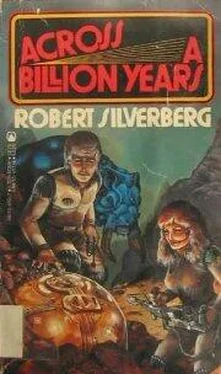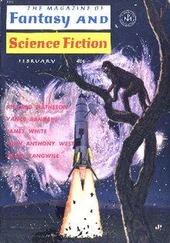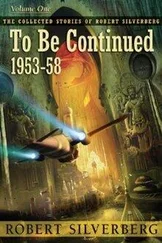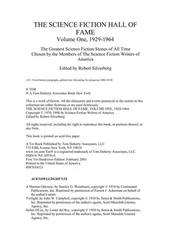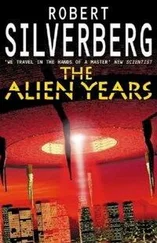We’ll go out and stroll a while, unless it’s still raining. She’s a nice kid. This fixation she has on Saul makes no sense to me — he’s twice her age, obviously a confirmed bachelor, and must have been frightened by a woman at an early age, judging by the way he hides behind those stamp albums — but maybe Jan’s got a need for pursuing shy older men. We’re each of us chimpo in our special way, I guess. Anyhow, if she wants to walk a while, why should I say no? It’s a way of passing time.
So I’ll wrap up this cube here. Perhaps next time I’ll tell you how we uncovered the tomb of the Emperor of the High Ones and found him still alive, in suspended animation. Or how we found the Secret Treasure of the High Ones, fifty billion credits worth of uranium. Fantasy comes cheap on a dull night. Tomorrow arrives the moment of truth at last. Out into the cold and dark, now. Off.
August 28, 2375
Higby V
So we started digging, and right away we came to this sleek solid plutonium sarcophagus with a platinum button on its side, and Dr. Horkkk pushed the button and the coffin popped open, and inside it we saw the Emperor of the High Ones, who came out of suspended animation and sat up and said, “Greetings, O beings of a distant future age!”
So we began to follow this narrow winding tunnel through the hill, and Kelly cored into a side passage where there was this vault of blue fusion-glass, and upon command of “Open, Sesame,” the vault door swung back and we saw, neatly stacked, the cubes of uranium that we realized had to be the imperial treasure of the High Ones, worth at least fifty billion credits.
So we —
Well, as a matter of fact nothing like that has happened yet. Or is really likely to happen. But I thought I’d start this letter off with some zing. It is true, though, that we’ve been excavating for several days and that the site looks promising. More than promising — downright exciting.
This is the twenty-third High Ones site that’s been discovered. Possibly you know that the first site came to light a dozen years ago in the Syrtis Major region of Mars and was mistaken at first for the remains of some extremely ancient Martian culture. But nothing else like it turned up on Mars, whereas a couple dozen sites very similar to it have been found on widely spaced planets occupying a sphere with a radius of about a hundred light-years. So we know that the people who left these deposits must have been members of some galactic race that covered a lot of territory in its travels. Very early in the story, the newstape reporters christened them the High Ones, and the name has stuck. Even we archaeologists use it. It isn’t very scientific, but somehow it seems appropriate.
All the High Ones sites found so far follow the same general pattern. That is, they represent outposts rather than permanent settlements, as if the High Ones had sent roving bands of explorers all over the galaxy and these explorers had stopped off at a given planet for twenty or thirty or fifty years, then moved along. At each site archaeologists have uncovered typical High Ones artifacts — intricate, incomprehensible objects, usually well preserved, downright baffling in their function. The workmanship is superb. They used gold and metallic plastics as their materials, usually, and some of the artifacts seem almost new.
They aren’t new. They come to us across a billion years.
We have fairly exact methods for dating ancient sites, and we know that the High Ones lived on Mars approximately a billion years back, with a possible range of error of ten million years, or one percent. The other sites have been dated at various points from 1,100,000,000 years ago to 850,000,000 years ago. Which tells us two significant things:
— That the High Ones had developed a galactic civilization at a time when nothing more complex than crabs and snails had evolved on Earth.
— That the High Ones’ culture underwent no significant changes over a span of a quarter of a billion years — which indicates a rigid, conservative, fully mature civilization that endured for a period of time that makes me dizzy to think about. We look upon the ancient Egyptians as a stable bunch because their civilization remained basically the same for about three thousand years. Zit! What’s three thousand years against 250,000,000?
The High Ones have handed us a huge batch of puzzles. Such as the question of their origin. We haven’t yet found any High Ones outposts beyond that hundred-light-year radius. Of course, we haven’t done much real exploring beyond that radius ourselves, although we’ve had ships out as far as eight hundred light-years from Earth. But the total absence of High Ones traces on all the outer worlds examined so far is odd.
One school of thought argues that the High Ones are native to our galaxy and originated on one of the planets inside the hundred-light-year zone. The fact that we haven’t yet found anything like a major city of the High Ones is irrelevant; sooner or later we’ll come upon the planet from which all the scouting parties set out. Dr. Horkkk is the leading exponent of this theory. In our group Leroy Chang supports him.
The other notion is that the High Ones came from someplace far out — 100,000 light-years away, maybe, at the other end of our galaxy — and hopped over most of the intervening stars to make a long and leisurely exploration of our little corner of the universe. Maybe they even were extra-galactic, say, from the Magellanic Clouds, 200,000 light-years away, and devoted a couple hundred million years to an examination of our galaxy. Dr. Schein buys the extra-galactic theory. So does Saul Shahmoon.
Naturally, Dr. Schein and Dr. Horkkk don’t ever cross swords openly over their differences of opinion. It just isn’t done. When two top scientists disagree, they do so in the pages of learned journals, with festoons of footnotes and a lot of carefully antiseptic prose that says, in not so many words, “My respected opponent in this discussion is a chimpo quonker.” If they happen to meet face to face, or especially if they find themselves on the same field expedition, they remain icily polite, never even mentioning the issue in dispute, although under their skulls they can’t help thinking, “My admired colleague here is a chimpo quonker.”
The rest of us aren’t bound by the code duello that governs men at the summit of a field. So we’ve taken sides and we yammer a lot about our ideas — more for the sport of it than anything else, since we have no real knowledge to go by.
“Obviously extra-galactic,” says 408b crisply. “The total absence of evidence except in one insignificant corner of the galaxy means that they must have come from—”
“Cut it,” Mirrik bellows. “One of these days we’ll find their home world, right close at hand, and—”
“Nonsense!”
“Feeby foolery!”
“Unscientific blenking!”
“A lot of silly fission!”
“Ignorance!”
“Idiotic slice!”
“Intellectual nilliness!”
And so the quonking goes, far into the night. Mirrik and Steen Steen back Dr. Horkkk on the local-origin theory, and so does Jan Mortenson, although not very firmly. 408b and I line up with Dr. Schein and the extra-galactic-origin theory. Kelly Watchman is neutral, because it’s not in the nature of androids to get excited about theories when they lack enough facts to make a logical judgment. Pilazinool, our specialist in intuitive analysis, is also silent on the subject. I’m sure he has his private opinions, but it isn’t his habit to air them until he feels ready to issue a complete statement. When he does issue a complete statement, it isn’t intended as a topic for debate; it’s meant as The Word. Pilazinool therefore is careful not to try to give The Word until he knows what it is.
Читать дальше
